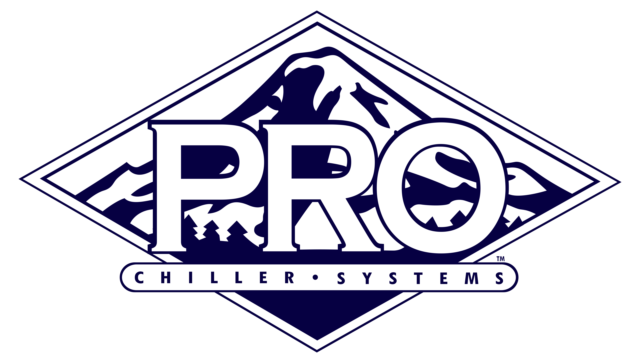There can be large differences between cows, but certainly some cows make it very obvious they are unhappy with the milking process by kicking the unit off. Other cows are more subtle and just start to step side to side, while some do not move at all. First-lactation animals can be more likely to kick at the unit or dance side to side as a way to show their discomfort with the milking process. This can be obvious on many farms by watching how often an anti-kick device is used and on what group of cows.
As you watch a cow being milked, there are two times when they are most likely to show abnormal cow behaviors related to the milking machine. The first time is at approximately one-and-a-half minutes into the milking. This is the time point when the milk flow rate slows down if the cow was not properly stimulated or the lag time from stimulation to unit attachment was too short. When the milk flow rate slows, the vacuum level at the teat end goes up, as does the vacuum in the mouthpiece chamber of the liner in many cases. The cow senses this change, and many cows show it visually by starting to step or kick at the unit.
The second time we see abnormal cow behavior is at the end of milking when the milk flow rate has slowed or stopped. At this point, the vacuum level at the teat end rises close to the milk line vacuum and, again, the vacuum level in the mouthpiece of the liners is often quite high. It is not uncommon to see cows start to dance side to side and pick their feet up or even remove the unit with their foot at the end of milking.
What are these behaviors telling us about the milking process? Based on our observations, we interpret this abnormal cow behavior as the cows telling us there is an opportunity for improvement. Why do we care about this abnormal cow behavior? There are many reasons we should care about this, but a few of the top ones would be safety, cleaner units, less damage to units, a better work environment and a better experience for the cow. In general, a better experience for the cow is a better experience for all involved.
How do you correct the abnormal cow behavior at the front end of milking?
The front end of milking is primarily about the milking routine, so getting this right is critical to making the cows happy with the milking event. Making sure the cow is properly stimulated (forestripping, wiping or mechanical brush) and 90 seconds have elapsed from stimulation to unit attachment are the two primary intervention points. Letdown can also be negatively influenced by the release of adrenaline in response to loud noises, moving the cows aggressively, slippery floors, etc.
Cows like consistency, and so it is also important for good letdown that all the people who milk your cows do it the same way. It has amazed us both how a poor routine that is done consistently can still produce similar results to a good routine that is inconsistent. The good news is, if you correct the milking routine, the majority of cows will adjust almost immediately, and you will see less stepping and kicking as soon as the next milking or two. Very few improvements can see such a quick reward for those involved.
How do you correct the abnormal cow behavior at the end of milking?
One area that many farms overlook is correct unit alignment. Remember, for most cows, there is only one quarter contributing to the milk flow at the time the automatic cluster remover (ACR) detaches the unit. This means that if we have poor unit alignment leading to quarters milking out at different rates, we prolong unit on-time, and the cow senses this on the quarters that are finished milking.
The question to answer with unit alignment is: Do I have a good unit alignment device that is not being used properly, or do I need to look into a better unit alignment device? Proper training for your employees will correct improper usage. If you need a different unit alignment device, talk with your equipment dealer for ideas on what might work better in your parlor. We scored a large parlor within the last two weeks that had over 80% of the units improperly aligned. This was leading to a prolonged unit on-time, as well as many cows kicking at the units prior to the ACR removing the unit. Shortening the hose and readjusting the way the counterweight unit alignment device worked were the interventions recommended to help improve the situation.
The second intervention point for correcting abnormal cow behavior at the end of milking is to adjust the settings on your ACR to remove units faster. These changes should be made slowly in order to give cows time to adjust, but most farms can take advantage of this opportunity area. As an industry, we have been trained to leave units on cows for a prolonged period of time, but the research over the years has not shown major disadvantages to getting the units off quicker. We just completed a trial on a large herd in the Northeast where we randomized the cows to two different ACR settings of 1.8 pounds per minute versus 2.8 pounds per minute. There was no statistical difference between the two groups in terms of pounds of milk harvested, but there was a significant difference in terms of unit on-time. The cows at 2.8 pounds per minute had a unit on-time that was 27 seconds shorter than the other group. There was no difference in clinical mastitis or change in somatic cell count (SCC) between the two groups.
Our conclusion as well as the farm’s conclusion was they could safely set the ACRs at 2.8 pounds per minute for the benefit of the cows and efficiency of the parlor. During the trial, we were on the farm every two weeks teat scoring all the cows, and we can tell you from firsthand experience, it was painful to watch the cows with prolonged unit on-time, as they would start to step and kick at the end of milking trying to let us know these units did not need to be on this long. Now we have proof the cows were right, and so, hopefully, you can take advantage of this new knowledge as well.
Dairy production is changing, and more emphasis is being placed on getting the most out of what you have, while also doing what is best for the cow. This research shows that leaving a little milk behind and fixing some small issues can lead to better results for your workers and your cows. Good luck, and your cows will thank you. ![]()
Lee Pratt is with Finger Lakes Dairy Service. Email Lee Pratt.
Paul Virkler and Lee Pratt provided this article on behalf of the Empire State Milk Quality Council (ESMQC), a nonprofit organization in New York state that focuses on helping producers achieve higher levels of milk quality.
PHOTO: If cows aren't standing calmly for milking, consider adjusting the milking routine, unit alignment or automatic cluster remover settings. Photo by Karen Lee.

-
Paul Virkler
- Veterinarian
- Cornell University / Quality Milk Production Services
- Email Paul Virkler






